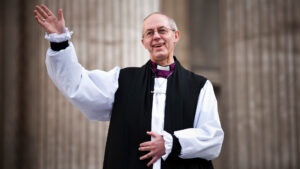Behold … the greatest cover-up in human history. Not only was Jesus Christ married, but He was a father.
— Dan Brown, The Da Vinci Code
Dan Brown’s notion that everything you had been taught about Jesus was wrong cultivated controversy, captivated conversations, and sold millions of books. During the years following the 2003 publication of his novel, The Da Vinci Code—-and again in 2006 with the release of the film adaptation—-the book unsurprisingly drew fire from Christians. But the novel was also panned by atheists, agnostics, historians, literary critics, journalists, and almost every other group you can name. Controversy creates cash, and Brown hit on a winning strategy of offending the sensibilities of nearly everyone.
In case you missed out on all the clamor, The Da Vinci Code centers around a plot by a secret organization to hide what Brown and his protagonists see as “the greatest cover-up in human history”: that Jesus was married to Mary Magdalene, pregnant at the time of the crucifixion and smuggled away and hidden to protect Jesus’ bloodline.
This spurious version of biblical history is not new, and if left only at that, the book might have faded into obscurity. But Brown took the unusual step of prefacing the novel under a bold heading of “FACT,” noting, “All descriptions of artwork, architecture, documents, and secret rituals in this novel are accurate.” This, from the book’s opening, gives the novel a “based on a true story” air of credibility, however self-interested.
The novel’s claims about Jesus and the church have been rebutted in great detail by both Christian and secular critics. Biblical scholars across the spectrum, from the evangelical Darrell Bock to the agnostic Bart Ehrman, gave debunking the novel book-length treatment.
History in Soundbyte
For a lone novelist to challenge the canon of world history would be more than a little overwhelming, so Brown must provide some authority for his claims. This comes via the high-brow academics of his characters Robert Langdon and Leigh Teabing. Fictional scholars—-not subject to real-world peer review—-are free to make sweeping pronouncements at will and without explanation, which they do with great abandon throughout the novel.
His characters’ premises already prefaced as fact, Brown launches into a romp through Europe and its hidden history. To call it fast-paced would be an understatement. The 454-page book has 105 chapters—-an average of 4.32 pages per chapter—-each ending in a cliffhanger of its own. This structure makes The Da Vinci Code the perfect vehicle for delivering Brown’s alternate history of Jesus. To a culture trained to absorb everything in soundbytes, the assertive “everything you know is wrong” declarations thrive as a substitute for detailed analysis. Brown seldom misses an opportunity to remind his readers that he is smarter than us. He regularly interrupts the flow in order to teach us the “real reason” behind many of the things we do in the modern world.
Coding Conspiracy
Suffering from the poor character development and choppy dialogue common to many potboilers, Brown needs something to keep the reader turning the page and talking about the book. So he masterfully employs a tool to cast suspicion on the world we know around us: secret codes are hidden everywhere in plain sight.
Da Vinci’s “code,” according to the novel, consists of hidden clues within Leonardo’s painting The Last Supper that reveal Mary Magdalene was herself the legendary “Holy Grail” because she carried within her womb the bloodline of Jesus. The book asserts that Leonardo himself was a member of the secret Priory of Sion—-an ancient clandestine order formed to protect the bloodline of Jesus and Mary Magdalene from groups like Opus Dei and the greater Roman Catholic Church, organizations intent on hiding the secret that could destroy their existence.
There is conspiracy behind the novel’s murder mystery, but this is ultimately just a plot device to shine the light on Brown’s bigger conspiracy—-everything we’ve been taught about Jesus was a lie. The patriarchal church represented by the Bible is a sexist plot against female leadership that has forced the “sacred feminine” into hiding under every stone within Western civilization.
Conspiracy theories are unavoidably unknowable. More often than not, no matter the amount of evidence to the contrary, the conspiracy theory lingers. No video of planes crashing into the Twin Towers, no eyewitnesses who saw a jetliner dive into the Pentagon, will convince those who believe 9/11 was an inside government job. No matter how many saw the liftoff, no matter how many moon rocks were brought back, those who believe the Apollo landings were staged will not be convinced. To discount the conspiracy would be to confront the truth head-on and upset the unknowable uncertainty that gives conspiracy its life.
Conspiracy theorists may operate under the guise of seeking truth, but in reality they’re driven by cynicism. Any new revelation casts further doubt, and truth becomes separated from the seeker by a cloud of suspicion. Hence the Jesus of The Da Vinci Code is unknowable, shrouded in codes.
Decoded Christ
Brown’s Jesus, much like the secret society that protects him, is elusive and unattainable. With his revelation suspect and his person unknowable, the novel’s Christ is locked up in a code that cannot be cracked. And a Christ who cannot be known cannot be faced—-he can only be cast with suspicion.
The Jesus of the Bible, though, reveals himself. And a Christ who is revealed must be faced. A Christ who is revealed is decidedly decoded—-not a code to be solved by man, but rather the Coder who solves men.
Involved in Women’s Ministry? Add This to Your Discipleship Tool Kit.
 We need one another. Yet we don’t always know how to develop deep relationships to help us grow in the Christian life. Younger believers benefit from the guidance and wisdom of more mature saints as their faith deepens. But too often, potential mentors lack clarity and training on how to engage in discipling those they can influence.
We need one another. Yet we don’t always know how to develop deep relationships to help us grow in the Christian life. Younger believers benefit from the guidance and wisdom of more mature saints as their faith deepens. But too often, potential mentors lack clarity and training on how to engage in discipling those they can influence.
Whether you’re longing to find a spiritual mentor or hoping to serve as a guide for someone else, we have a FREE resource to encourage and equip you. In Growing Together: Taking Mentoring Beyond Small Talk and Prayer Requests, Melissa Kruger, TGC’s vice president of discipleship programming, offers encouraging lessons to guide conversations that promote spiritual growth in both the mentee and mentor.






























